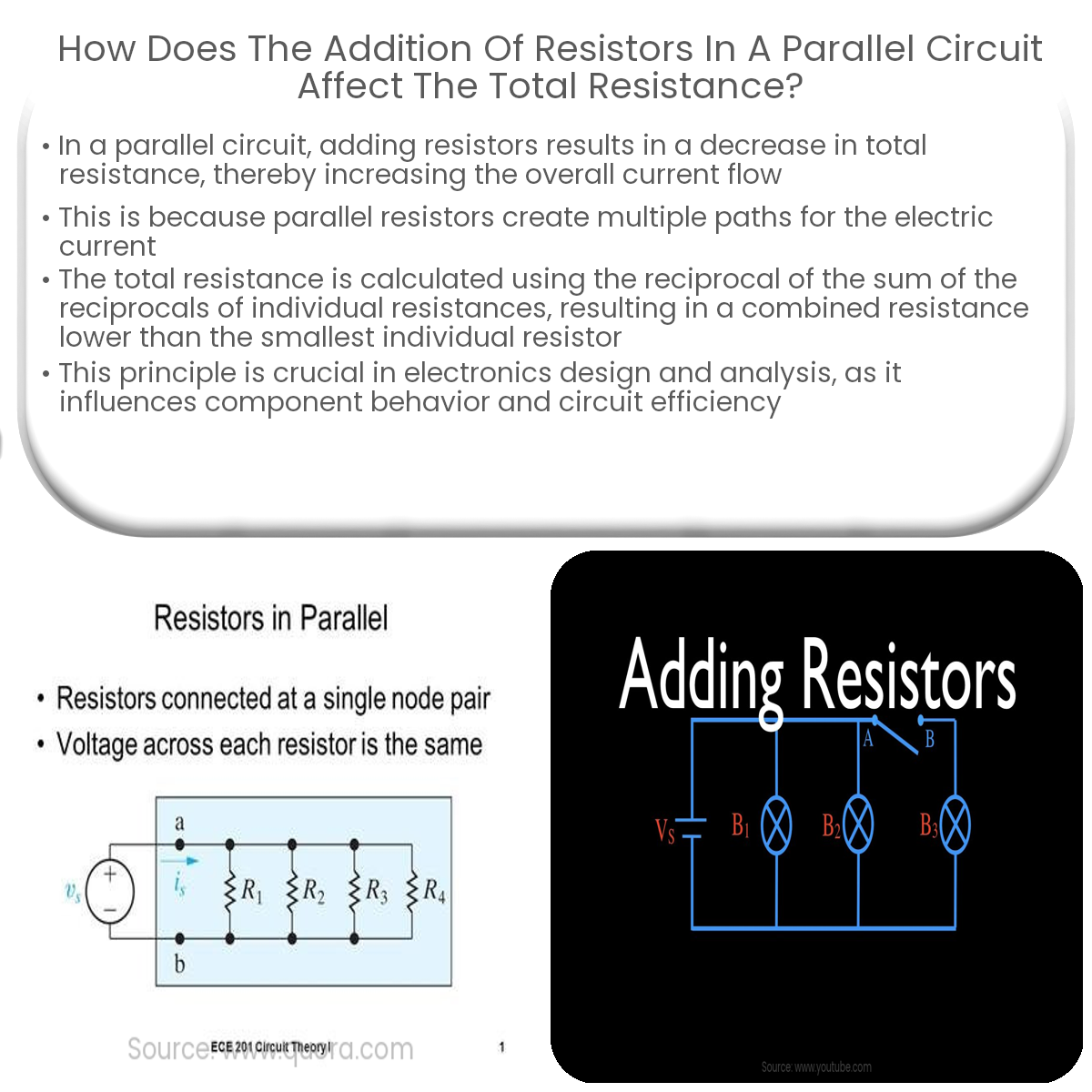In parallel circuits, adding resistors decreases total resistance, as multiple current paths are created, increasing overall current flow.
Adding Resistors in Parallel Circuits
In a parallel circuit, resistors are connected in such a way that they share the same voltage across them. Unlike a series circuit, adding resistors in parallel results in a decrease in the total resistance. This article will explore how adding resistors in parallel affects the total resistance and how to calculate the new resistance value.
Effect on Total Resistance
When resistors are connected in parallel, their combined resistance is lower than the smallest individual resistor. This decrease in resistance occurs because multiple paths are available for the electric current to flow through. As a result, the overall current flowing through the circuit increases as more resistors are added in parallel.
Calculating the Total Resistance
To calculate the total resistance in a parallel circuit, the reciprocal of the sum of the reciprocals of the individual resistances is used. The formula for calculating the total resistance (RT) is:
1/RT = 1/R1 + 1/R2 + 1/R3 + …
Once the sum of the reciprocals is calculated, the reciprocal of the result will provide the total resistance value. For example, if there are two resistors with values of 4 Ω and 6 Ω connected in parallel, the total resistance is:
1/RT = 1/4 + 1/6 = 5/12
RT = 12/5 = 2.4 Ω
Conclusion
Adding resistors in parallel reduces the total resistance, allowing for an increased current flow in the circuit. The total resistance can be calculated using the reciprocal of the sum of the reciprocals of individual resistances. Understanding this principle is essential for the design and analysis of electronic circuits, as it impacts the behavior and efficiency of the components within the circuit.


